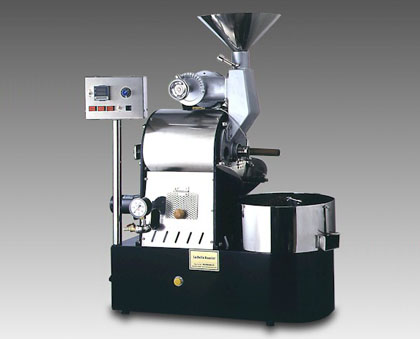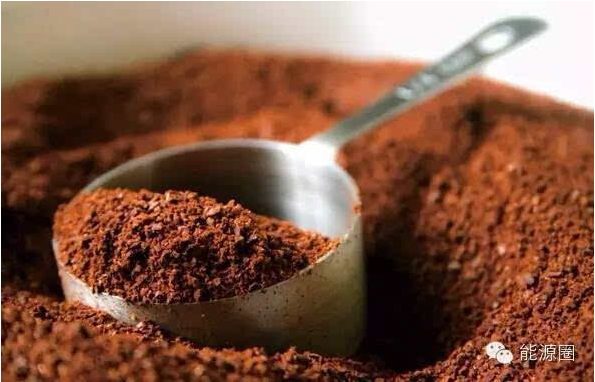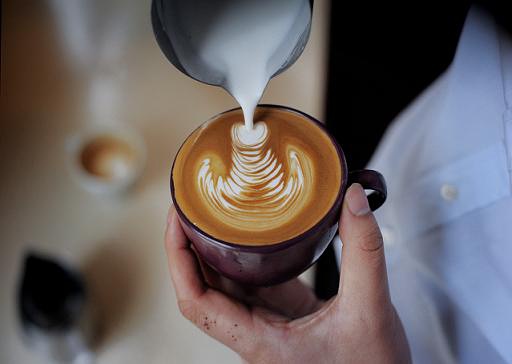The evolution history of coffee roaster

As early as the 13th century, Arabs invented to put coffee beans in a pot, heat them and stir-fry them, then grind them into powder, and then brew coffee. The early Arabs liked to bake the beans shallowly and boil them with spices such as cardamom. Later, this method of stir-frying coffee spread to Syria, Turkey and Egypt, where it is customary to stir-fry coffee black, then grind it into powder, add sugar and boil it in water, then pour it into a small cup without precipitation and drink it with coffee grounds.
After coffee was introduced into Europe in the 18th century, Europeans also used the Turkish style to stir-fry coffee until black. Later, because of geographical and cultural differences, Europe was divided into shallow baking schools dominated by Nordic, German, British and Scandinavian countries and deep baking schools dominated by southern Europe. The former usually bake the beans to city--full-city, while the latter generally bake them to the same depth as italy,french. Accordingly, the North American continent, which was later dominated by immigrants from northern Europe, also followed shallow baking, while Latin America, which was dominated by immigrants from southern Europe, was popular in baking. Until the mid-19th century, most of Europe used iron pots or ovens to bake beans at home, and later invented small roasters that use closed iron buckets instead of iron pans and put them on a fire to manually control, and can bake a few pounds of beans at the same time. Used by some coffee shops. With the advent of large baking machines in the mid-19th century, large quantities of baked beans became possible. After continuous innovation after the advent of large roasters, electronically controlled precision machines have appeared in the first half of the 20th century, and machines that can continuously bake 5000kg every hour have been developed. The emergence of large roasters has changed people's own baking habits. Buying packaged baked beans or coffee powder to cook directly at home facilitates the fast-paced life of modern people.
By the 1960s, branded beans dominated the market. But there are also problems in mass roasting: ordinary raw beans, in order to maintain excessive shallow baking, lack of freshness caused by the lack of flavor, since the 1980s, a "boutique coffee movement" was launched in the United States. It advocates people to buy boutique raw beans, home baking, drink fresh coffee, pursue quality and taste, and home roasting begins to receive attention. At the same time, the pursuit of coffee quality also forces some big roasters to adopt higher quality beans to ensure the baking quality.
Development and evolution of roaster
In the early days, people generally used iron pot to stir-fry coffee beans. after coffee was introduced into Europe, Europeans used Turkish iron pot to stir-fry beans, and later invented hand-operated rotary baking, which could bake several pounds of beans at the same time, which was used by some coffee shops. In the 1860s, large roasters began to come out, and the use of blower to cool baked beans in 1867 gave birth to the development and innovation of large roasters. At the end of the 19th century, the advent of hot air roaster greatly improved the speed and efficiency of coffee roasting, making it possible to produce more in large quantities. In the 20th century, with the combination of roaster and electronic, it was improved to be more precise, and the fully automatic roaster appeared and had more advanced functions.
Important Notice :
前街咖啡 FrontStreet Coffee has moved to new addredd:
FrontStreet Coffee Address: 315,Donghua East Road,GuangZhou
Tel:020 38364473
- Prev

Analysis of classic coffee varieties-to give you an in-depth understanding of the mysterious country of coffee
Coffee (Coffee) (the word comes from a small town in Ethiopia called kaffa, and in Greek Kaweh means strength and passion. Tea, coffee and cocoa are called the three major drinks in the world. Coffee tree is a small evergreen tree of Rubiaceae. Daily coffee is made of coffee beans combined with a variety of cooking utensils, and coffee beans refer to coffee fruit.
- Next

Coffee has a variety of flavors-challenge your taste buds
Abstract: the overall flavor of coffee is composed of water-soluble taste, volatile aroma and the overall flavor of unscented and tasteless coffee, and is constructed by water-soluble taste, volatile aroma and tasteless taste. Smell and touch can be appreciated together. Some people simply write the coffee flavor into the following equation: flavor = volatile aroma water-soluble taste
Related
- What is the meaning of lactic acid fermentation with coffee bean treatment?
- How to judge the state of foam by sound?
- How does the latte pull out the unicorn pattern? Come to get for a little trick to improve the flower pull!
- Will flower pulling affect the taste of the latte?
- Do you know the history of coffee?
- The difference between honey treatment and sun washing what is raisin honey treatment?
- What kind of milk can a novice use to make coffee foam to keep the foam longer? The correct method and skills of milking tutorial sharing
- Why do washed coffee beans taste sour? Flavor characteristics of washed Coffee
- Introduction to the skill of how to practice the size and height of water injection around the circle of hand-brewed coffee
- How do beginners practice coffee flower drawing from scratch?

